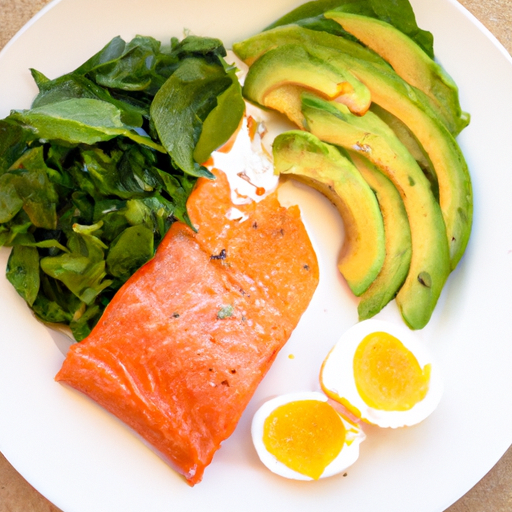
How to Improve Your Flexibility for Better Workout Performance
In the realm of fitness, flexibility is the unsung hero that often gets overshadowed by strength and endurance. However, flexibility training can radically transform your workout performance, making you faster, stronger, and less prone to injuries.
Why Flexibility Training Matters
Flexibility isn't just about bending over to touch your toes or doing a split. It's instrumental in enhancing your range of motion, which can lead to:
- Improved posture
- Better muscle coordination
- Reduced risk of injury
- Enhanced athletic performance
- Greater overall strength
Neglecting flexibility training is like having a car with turbo but driving with the handbrake on. You might still move fast, but you're missing out on optimal efficiency and risking wear and tear.
Understanding the Basics: Flexibility vs. Mobility
Before diving into stretch routines, it's crucial to distinguish between flexibility and mobility. Flexibility refers to the ability of your muscles to stretch, while mobility involves the range of motion within your joints. While flexibility is important, mobility ensures those flexible muscles translate to functional movement. Think of flexibility as the size of the cake and mobility as a slice ready to eat - both important, but one gets you to the yum factor!
Key Components of Flexibility Training
To build a comprehensive flexibility training routine, include the following components:
- Dynamic Stretching: Pre-workout movements that prepare the body by warming up muscles and joints.
- Static Stretching: Post-workout holds that lengthen muscles after exercise to improve flexibility over time.
- Foam Rolling: Targets fascia to alleviate muscle tightness and improve blood flow.
Effective Stretch Routines
Here are some tried-and-true stretch routines that can help you loosen up those muscles:
Dynamic Stretches
Incorporate these into your warm-up for heightened readiness and prevention of injury:
- Leg Swings: Stand on one leg and swing the other like a pendulum, front to back and side to side.
- Arm Circles: Extend your arms and make large circles clockwise and counterclockwise.
- Torso Twists: Stand with feet shoulder-width apart and twist from side to side.
Static Stretches
Use these after workouts to foster recovery and flexibility:
- Seated Forward Bend: Sit with legs extended and reach for your toes, holding the stretch for 20-30 seconds.
- Child's Pose: Kneel and sit back on your heels, extending arms forward and lowering your chest.
- Figure Four Stretch: Lie on your back, cross an ankle over the opposite knee, and gently pull in.
Integrating Flexibility Training into Your Routine
Creating synergy between flexibility exercises and your usual workouts is key. Here are some tips:
Consistency is Key
Flexibility is a quality nurtured over time. Consistent practice can lead to significant improvements. Aim for at least two to three sessions per week dedicated to stretch routines.
Progression is Progress
Gradually increase the intensity of your flexibility training. As your range of motion improves, challenge yourself with deeper stretches or longer holds.
Listen to Your Body
Stretching should never be painful. Pay attention to your body’s signals, and don’t push beyond your comfort zone. Remember, "No pain, just plenty of gain."
Incorporating Mobility Work
Mobility training complements flexibility efforts efficiently. Here are some simple exercises you can add:
- Active Hip Circles: Stand with feet apart and draw circular motions with your extended leg.
- Ankle Circles: Elevate each foot and rotate your ankles in circular motions.
- Cervical Rotations: Gently rotate your head left and right to keep neck movements fluid.
The Mind-Body Connection
Flexibility training also fosters a deeper mind-body connection, promoting relaxation and reducing stress. Breathing deeply during stretches can activate the parasympathetic nervous system, which enhances relaxation - because, let's face it, stretching shouldn't be stressful.
Adapting for Different Fitness Levels
Whether you're a beginner or a seasoned athlete, flexibility can be tailored to suit all fitness levels:
Beginners
Start slow. Focus on gentle, basic stretches. Incorporate yoga beginners’ classes into your routine to familiarize yourself with stretching.
Experienced Athletes
Challenge yourself with advanced flexibility exercises like PNF (Proprioceptive Neuromuscular Facilitation) stretching or pilates. Engage in regular assessments of your range of motion and tweak routines to ensure constant progress.
Tracking Progress and Setting Goals
Regular assessment can aid in tailoring your flexibility training to your evolving needs:
- Keep a journal of your stretches and range of motion improvements.
- Set specific, achievable goals such as mastering a particular yoga pose.
- Celebrate small victories to maintain motivation.
Embracing Flexibility as a Lifestyle
Thinking beyond the gym and incorporating flexibility training into daily life can contribute significantly to overall wellness. Simple practices like maintaining good posture while sitting, using ergonomic furniture, and taking regular stretch breaks can prevent prolonged stiffness and increase everyday comfort.
Conclusion
Flexibility training is more than just a component of a well-rounded fitness routine - it's a pathway to better physical health, improved performance, and enhanced quality of life. By making a commitment to incorporate structured stretch routines and mobility exercises into your fitness plan, you'll set the foundation for a workout performance that feels effortless and rewarding.
Remember, a flexible you is a happier, healthier, and more agile you. So why stick to wooden routines when you can bend with the best of them?
